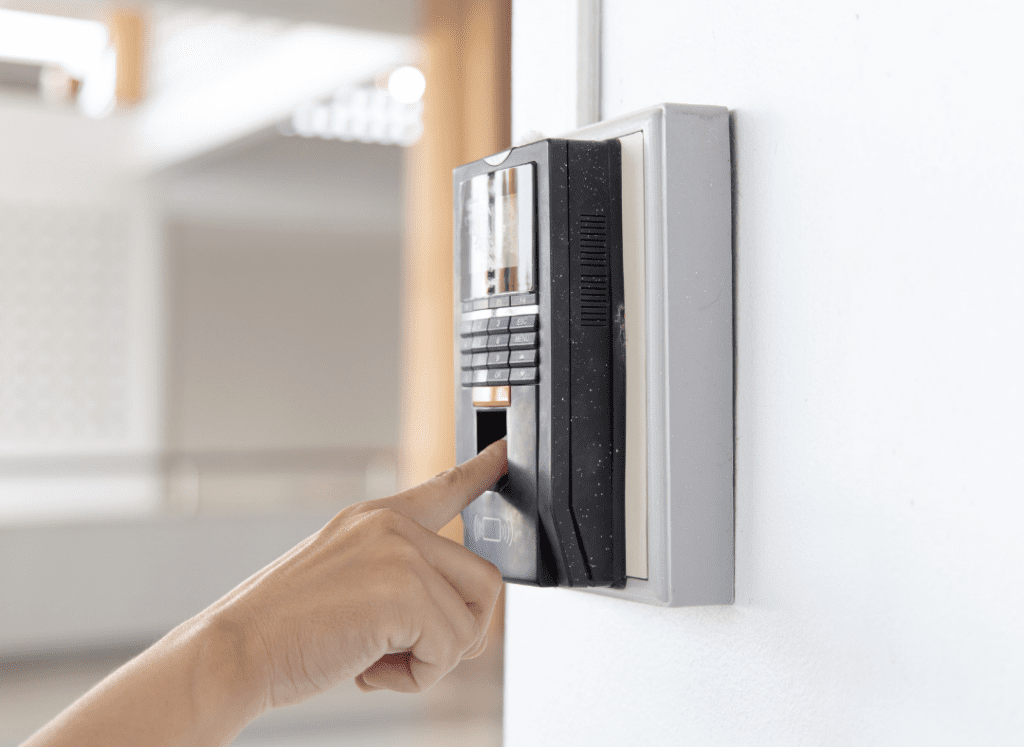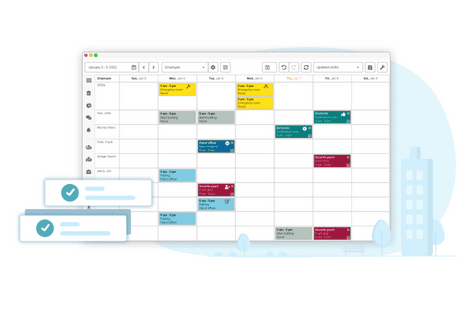In the fall out of the global pandemic and the rise of working from home and remote work, the idea of employee monitoring is now more popular than ever. With this change in the global workplace as well as the rise of mobile workforces, employee monitoring is a very mainstream topic. The core issue is managers wanting to know what work is being done, and having a system in place to track it. With this, employee concern has been growing regarding privacy and what employee monitoring software means for them.
What is Employee Monitoring?

Employee monitoring is the growing practice of companies using tools and software to track work, performance, and projects. There is a wide range of business areas that employers track. There are many tools and technologies that businesses use to measure productivity, track employee attendance, monitor security, and match hours worked to hours scheduled. Employee monitoring ranges from reporting tools to actual surveillance.
Types of Employee Monitoring
As mentioned above, there are many ways to track and monitor employees. Employee monitoring differs depending on the industry you’re in and the tools you require. Security guard companies might use guard touring software while home healthcare agencies use geofencing etc. to ensure carers are visiting patients. There are also a range of tools that can be used to track and monitor employee devices. These tools are often the ones that raise concern. Let’s take a deeper look into these
Monitoring Employee Internet and App Usage
These days, there are very few jobs that are completed without some form of a personal device. Whether it’s a smartphone, a tablet, or a laptop, most employees use a device in their daily duties. To add to that, a survey from Salary.com highlights how over 60% of employees admit to browsing the internet for personal reasons during work hours. As an employer, you might be happy to know that there is software out there to monitor which URLs your employees visit. To add to that, you can use URL blocking and web filtering tools to ensure that employees are not visiting certain sites during the work day.
Monitoring Employee Screens
One of the many reasons that some employers are anti-remote work is because they fear that work won’t be done if employees aren’t watching. While some managers simply want to observe what’s going on, others claim to simply track progress and help employees from going down the wrong path. Whatever the reasons, there are tools out there that capture and record employee screens. Managers can view screenshots of their employee’s screens to ensure they are working on work-related tasks. However, as you can imagine, this opens up the conversation around employee privacy. While some tools simply capture the screens on the device, other software offers employers the option to take random web camera images while they’re working. In the opinion of some, this is a step too far.
Time Tracking

Time tracking is a key tool required for mobile workforces or teams that work across multiple locations. When managers aren’t present on site, it can be hard for them to know who arrived on site on time, late, or not at all. Celayix offers a range of time tracking tools to help with this. With the Celayix mobile app, employees can simply clock in/out from their smartphone, making it easy for them and employers. Employers can also set up geofencing to avoid time theft, when employees clock in when they’re not present on site. Celayix only uses GPS to track employees when they’re clocking in/out or completing a safety check. We do not track devices outside of those times. This is an important concern for a lot of employees.
Keylogging
Similar to screen monitoring, keylogging literally records every keystroke made on an employee’s keyboard and documents it in a readable file. While this might seem like a good idea for employers, you can imagine how employees might not fancy the idea. With keylogging, anyone who reviews the data has access to employee passwords. While employers might argue that anything work-related should be shared with them, employees do have a right to privacy, and passwords fall into that category. Also, employees can’t tell if a keylogger is active on their device or not. This creates poor transparency which leads to anxiety for employees.
There are more types of employee monitoring out there including monitoring employee emails, phone calls, or messages. Of course, there is also the most traditional form of employee monitoring – CCTV. All of these methods can be used in conjunction, or standalone. Our advice to employers who do wish to use employee monitoring software and tools is to be open and honest with their employees about the topic.
Is Employee Monitoring Viable?
Do these tactics really work in the long term though? Does surveillance have any effect on the behavior of your employees or is it just a one-time benefit? The research paper by Pierce, Snow, and Macfee titled “Cleaning House: The Impact of Information Technology Monitoring on Employee Theft and Productivity”, answers those questions exactly.
In the study, researchers measure the impact of software that monitors employee-level theft and sales transactions, before and after installing surveillance equipment, at 392 restaurants in 39 states. The restaurants were in five “casual dining” chains.
Theft & Fraud

Employee theft and fraud is a big problem, as it costs an estimated $200 billion a year across the economy. In the restaurant industry, analysts estimate the losses from employee theft at 1 percent of revenue. That does not seem like a lot, but restaurant profit margins are slender, typically 2 to 5 percent. So cutting down on theft can be an important contributor to a restaurant’s financial health.
Most of the restaurant industry pays its servers low wages and they depend on tips. Employee turnover is high. Theft is also common and somewhat normalized in the industry.
The savings from employee monitoring software preventing thefts were modest, $108 a week per restaurant. However, after installing the monitoring software, the revenue per restaurant increased by an average of $2,982 a week, or about 7 percent.
The impact, the researchers say, came not from firing workers engaged in theft, but mostly from employees’ knowledge of the monitoring and surveillance. Not only did unethical practices come to a halt, but employees also put more effort into their work. For example, prompting customers to have dessert or another beverage. With these small changes, the restaurant was able to increase revenue and the employees also saw an increase in tips.
In human resources, there is a heavy emphasis on employee selection: if you pick the right people, they will do the right thing. Instead, this research suggests that the surveillance effect on employee behavior is striking.
Ultimately, the decision falls with the employer. With that decision comes the responsibility to monitor employees ethically and in line with the right to privacy. If you’d like to hear more about Celayix’s time and attendance software as a form of employee monitoring, get in touch today.





